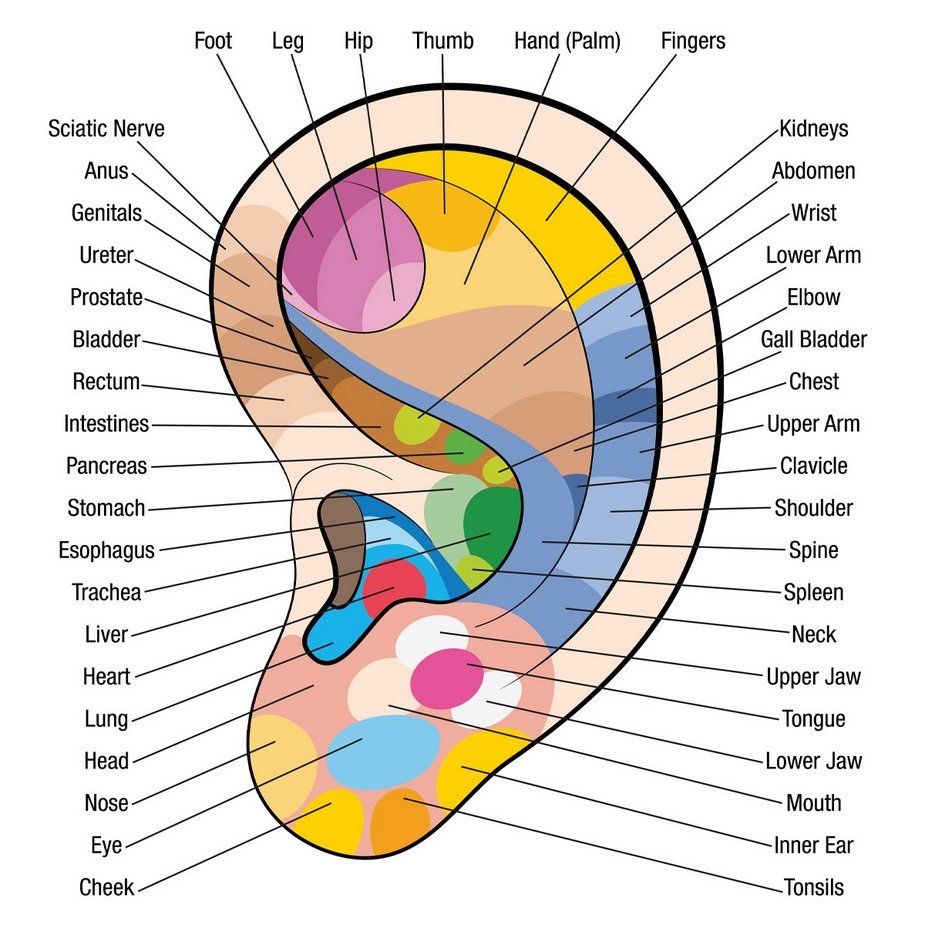Reflexology

🌿 Reflexology (Detailed Overview)
📌 What is Reflexology?
Reflexology is a holistic healing therapy based on the principle that specific points on the feet, hands, and ears correspond to different organs, glands, and systems of the body. By applying gentle pressure and massage techniques to these points, reflexologists aim to stimulate the body’s natural healing processes, restore balance, and promote overall well-being.
It is not the same as a foot massage—while massage works on muscles and tissues, reflexology works on reflex zones and energy pathways connected to internal organs.
- Historical Roots and Origins
The practice of working on the feet to influence health has ancient origins across various cultures.
- Ancient Egypt: The most famous evidence comes from a wall painting in the tomb of Ankhmahor at Saqqara (c. 2330 BC), known as the “Physician’s Tomb,” which depicts individuals receiving work on their hands and feet.
- Ancient China: The development of acupuncture and acupressure around 2500 BC involved the concept of vital energy (Qi) flowing through meridians, some of which terminate in the feet and hands.
- Traditional Cultures: Native American and African tribal cultures have long incorporated foot work into healing rituals.
- Modern Development: The form of reflexology practiced in the West today was primarily developed in the early 20th century by Eunice Ingham (1879-1974), a physiotherapist. She mapped the entire body onto the feet, creating the detailed “foot maps” still used today, and coined the term “Reflexology.”
- Core Principles and Theory
Reflexology operates on several key theoretical principles, though it’s important to note that scientific evidence for these mechanisms is still evolving.
- The Reflex Map: The body is mirrored on the feet (and hands/ears). The right foot corresponds to the right side of the body, and the left foot to the left side.
- Toes: Represent the head, brain, and sinuses.
- Ball of the Foot: Corresponds to the heart, chest, lungs, and shoulders.
- Arch of the Foot: Relates to the internal organs (liver, pancreas, kidneys, and stomach).
- Heel: Relates to the lower back, sciatic nerve, and pelvic area.
- Inner Foot Edge: Represents the spine.
- Outer Foot Edge: Corresponds to the arms, shoulders, hips, and knees.
- Energy Flow (Qi): It is believed that stress, illness, or injury can block the body’s energy pathways. Applying pressure to reflex points is thought to break up crystalline deposits (e.g., calcium urate or lactic acid) and clear these blockages, allowing energy to flow freely again.
- The Nervous System Link: A more scientific theory suggests that pressure on reflex points sends calming signals through the peripheral nervous system to the central nervous system (the brain and spinal cord). This helps to reduce stress, which in turn allows the body to relax and self-regulate more effectively. This is often explained through the Gate Control Theory of pain.
- Homeostasis: The ultimate goal is to help the body return to a state of balance where all systems function optimally.
- Potential Benefits and Uses
Research into reflexology’s efficacy is ongoing, but it is primarily valued for its ability to induce deep relaxation. Reported benefits include:
- Stress Reduction and Deep Relaxation: This is the most universally reported benefit.
- Pain Relief: Particularly for headaches, migraines, and general aches.
- Improves Blood & Oxygen Flow to the Brain
Reflex points connected to the head and brain (toes) are stimulated.
This increases circulation and oxygen supply to nerve tissues.
Helps slow down further degeneration and keeps neurons active.
- Enhanced Nerve Function: Stimulating over 7,000 nerves in the feet.
- Immune System Support: By reducing stress and improving overall function.
- Detoxification: Aiding the body’s natural elimination processes.
- Symptom Management: Often used by cancer patients to help manage nausea, vomiting, pain, and anxiety related to chemotherapy.
- Improved Sleep: Due to its deeply relaxing effects.
🌿 How Reflexology May Help in Alzheimer’s & Neurological Problems
- Reduces Stress, Anxiety, and Agitation
- Alzheimer’s patients often face restlessness, mood swings, and anxiety.
- Reflexology activates the parasympathetic nervous system → lowers cortisol (stress hormone).
- Creates a calming effect, reducing aggression, agitation, and confusion.
- By working on reflex points for the pituitary gland, hypothalamus, and adrenal glands, reflexology helps regulate:
- Endorphins (natural painkillers, mood enhancers)
- Cortisol (stress regulation)
- Melatonin (sleep-wake cycle)
- Improves Communication & Emotional Connection
- Reflexology involves touch therapy, which creates a sense of comfort, trust, and connection.
- Alzheimer’s patients, who may struggle with words, often respond positively to gentle touch and relaxation.
- Slows Down Cognitive Decline (Supportive Role)
- Regular reflexology sessions keep the nervous system active.
- Stimulating the brain reflex points helps maintain neural pathways.
- May improve short-term memory, attention span, and responsiveness
- Reflex zones linked to the pineal gland (regulates melatonin) can be stimulated.
- This helps in reducing insomnia and restlessness, common in dementia.
- Better sleep = better mental clarity during the day.
- Supports Hormonal & Neurochemical Balance
- By working on reflex points for the pituitary gland, hypothalamus, and adrenal glands, reflexology helps regulate:
- Endorphins (natural painkillers, mood enhancers)
- Cortisol (stress regulation)
- Melatonin (sleep-wake cycle)
- Improves Communication & Emotional Connection
- Reflexology involves touch therapy, which creates a sense of comfort, trust, and connection.
- Alzheimer’s patients, who may struggle with words, often respond positively to gentle touch and relaxation.
- Slows Down Cognitive Decline (Supportive Role)
- Regular reflexology sessions keep the nervous system active.
- Stimulating the brain reflex points helps maintain neural pathways.
- May improve short-term memory, attention span, and responsiveness
📊 Research & Clinical Observations
Studies show reflexology reduces agitation and anxiety in dementia patients.
- Patients receiving reflexology showed better relaxation, improved mood, and reduced need for sedatives.
- Though evidence is still emerging, it’s widely accepted as a supportive therapy in palliative and elderly care.
